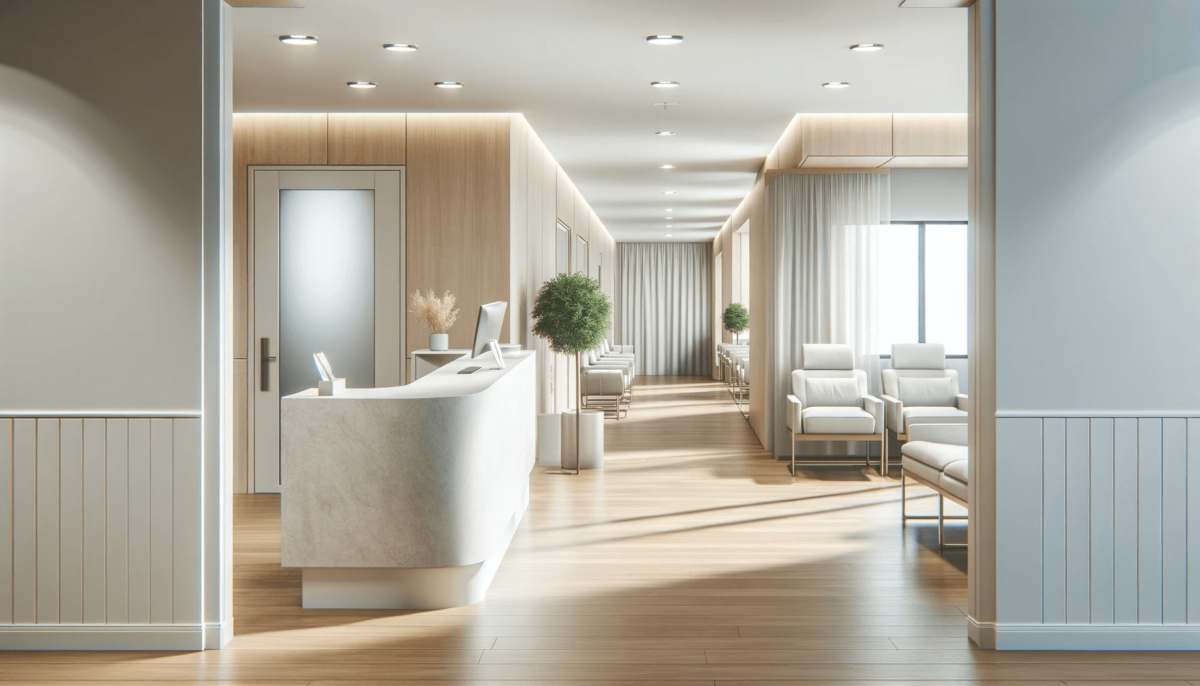What Furniture Choices Are Best for a Medical Office Setting?

Setting up a medical office involves more than just placing a few chairs and tables. The right furniture can make a significant difference in patient comfort and staff efficiency. According to a survey, the medical office interior design and layout can impact patient satisfaction and staff productivity. Here are some tips on choosing the best furniture for a medical office setting.
Comfortable Waiting Room Chairs
The waiting room is the first area patients see. Comfortable chairs are essential to make a good impression. Look for chairs with:
Padded seats and backs: This makes waiting more comfortable, especially for elderly patients or those with chronic pain.
Armrests: These help patients get in and out of the chairs easily.
Easy-to-clean materials: Choose materials like vinyl or leather that can be wiped down quickly. This is important for maintaining hygiene in a medical setting.
Functional Reception Desks
The reception desk is the hub of a medical office. It needs to be functional and welcoming. When selecting a reception desk, consider:
Height: The desk should be high enough to allow staff to stand or sit comfortably while interacting with patients.
Storage: Ensure there is ample storage for files, office supplies, and equipment.
Accessibility: The design should comply with the Americans with Disabilities Act (ADA) to accommodate patients with disabilities.
Ergonomic Office Chairs
Staff spend long hours at their desks, making ergonomic office chairs a necessity. These chairs help prevent back and neck pain. Key features to look for include:
Adjustable height and armrests: These allow staff to customize their chairs for maximum comfort.
Lumbar support: This supports the lower back and helps maintain good posture.
Swivel base: A swivel base allows easy movement and access to different areas of the desk.
Practical Examination Tables
Examination tables are crucial in a medical office. They need to be comfortable for patients and functional for doctors. Important features include:
Adjustable height: This makes it easier for patients to get on and off the table and allows doctors to adjust the table to a comfortable working height.
Sturdy construction: The table should be able to support patients of different weights.
Paper roll holder: This helps maintain hygiene by allowing fresh paper to be rolled out for each patient.
Storage Solutions
Medical offices require a lot of storage for patient files, medical supplies, and equipment. Efficient storage solutions can help keep the office organized. Options to consider are:
Lockable cabinets: These are essential for storing sensitive patient information securely.
Shelving units: Adjustable shelves can accommodate items of different sizes.
Mobile carts: These can be moved around the office as needed, providing flexible storage options.
Efficient Workstations
Doctors and nurses need efficient workstations to do their jobs well. When choosing workstations, look for:
Spacious desks: These should provide enough space for computers, paperwork, and medical equipment.
Cable management: Desks with built-in cable management help keep cords organized and out of the way.
Durable materials: Choose workstations made from durable materials that can withstand daily use.
Patient-Friendly Exam Room Chairs
Exam room chairs should be comfortable and functional. Look for chairs with:
Adjustable backrests: These allow patients to sit up or lie down comfortably during exams.
Wide seats: These accommodate patients of all sizes.
Sturdy armrests: Armrests provide support for patients when getting in and out of the chairs.
Child-Friendly Furniture
If your medical office caters to children, having child-friendly furniture can make a big difference. Consider including:
Smaller chairs and tables: These should be appropriately sized for children.
Play area furniture: Soft seating and play tables can keep children occupied while they wait.
Sanitation Stations
Hygiene is critical in a medical office. Sanitation stations help keep the office clean and reduce the spread of germs. Include:
Hand sanitizer dispensers: Place these at the entrance, in the waiting room, and in exam rooms.
Wipe dispensers: Provide disinfectant wipes for patients and staff to clean surfaces.
Wrapping Up
Choosing the right furniture for a medical office involves considering the needs of patients and staff. Medical office interior design is not just about aesthetics; it’s about creating a functional, comfortable, and efficient space. By selecting the right waiting room chairs, reception desks, ergonomic office chairs, examination tables, and storage solutions, you can improve patient satisfaction and staff productivity. Consulting with medical office construction companies can also help ensure that your office layout and furniture choices meet all necessary requirements.







